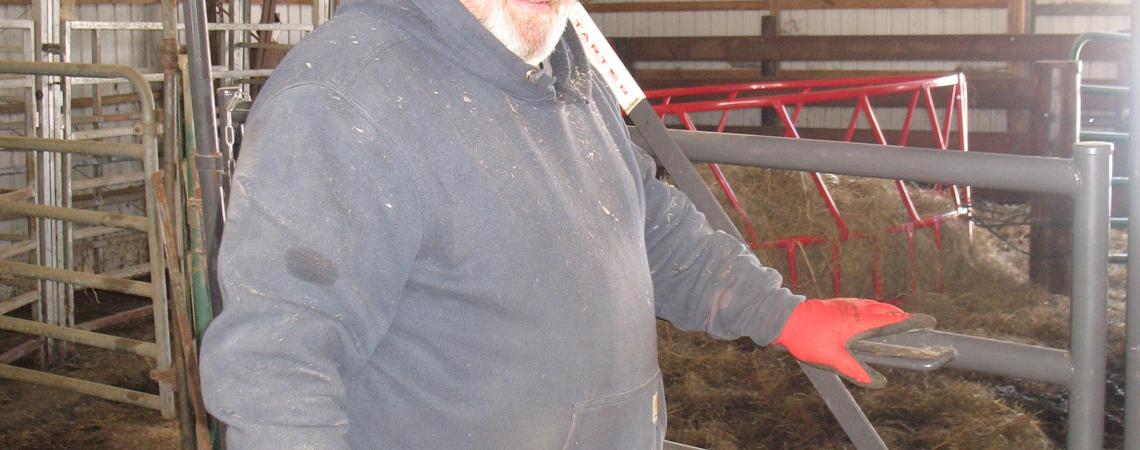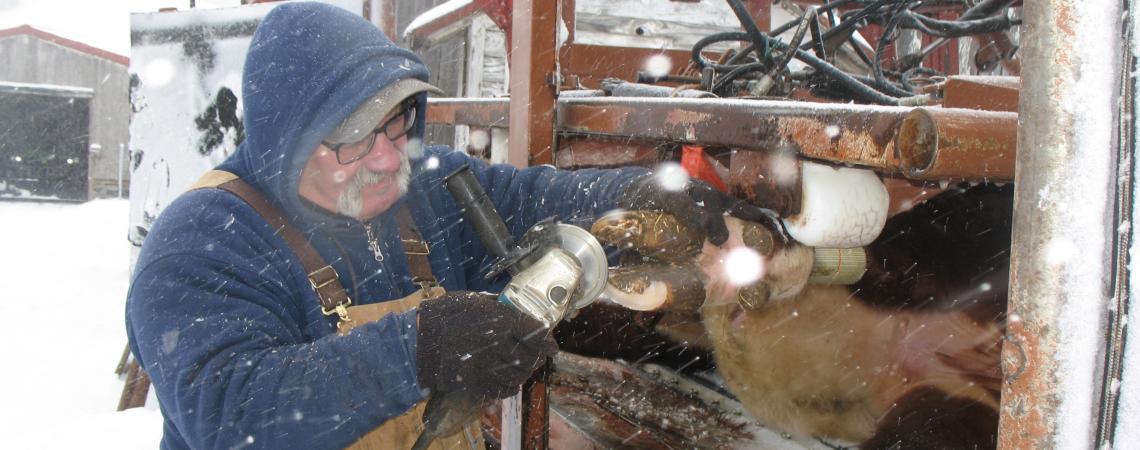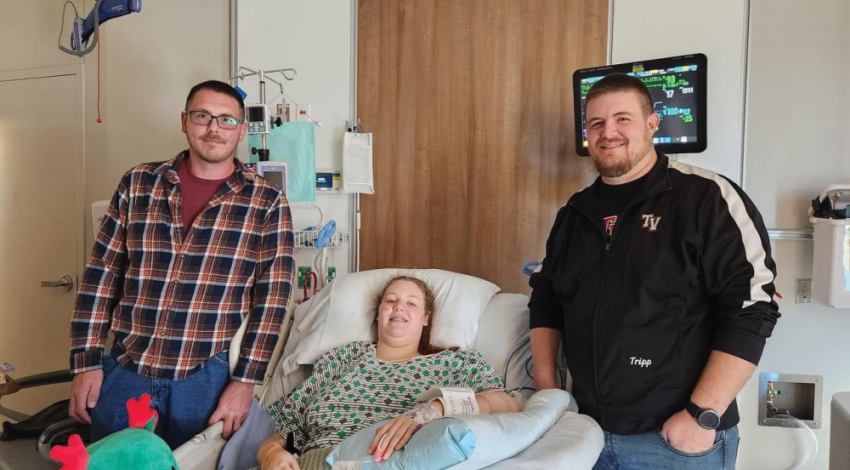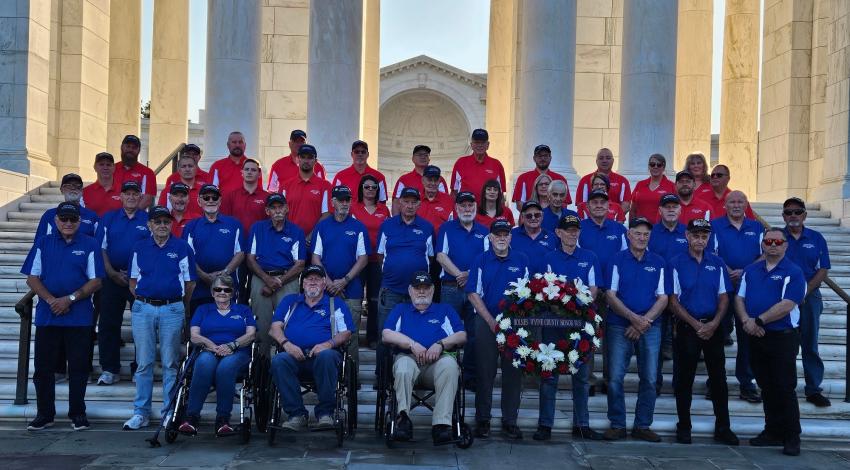The statuesque fellow known as Number 43 definitely needs a pedicure before heading to the big show. He won’t, however, be strolling into the neighborhood salon.
Instead, his technician will be coming to him — in a pickup truck, pulling a trailer full of power sanders, stiff bristle brushes, sharp picks, heavy-duty hydraulic tables, and even a padded chute to help with the job.
Number 43 is a 1-year-old Hereford, and his owner relies on the services of hoof trimmers like Joel Litt of Lakeville or Martin Watson of Claysville to get ready for the many fairs and cattle shows that come along during the course of the year.
Martin Watson of Claysville prepares to open a gate for his next customer.
Watson, a member of Guernsey-Muskingum Electric Cooperative in New Concord, says cows have cloven hooves, meaning each has two separate claw-like toes on each of their four feet.
Those hooves grow approximately 2 inches per year, so they need to be trimmed about twice per year — especially for cattle who spend considerable time on hard surfaces instead of pasture land. The hooves must be flat on the bottom and equal on each hoof to maintain optimal balance. Overgrown and uneven hooves can affect the way an animal walks and make it difficult to get to food and water. Untrimmed hooves can lead to lameness — often temporary but sometimes permanent — which necessitates treatment that’s much more costly than the $25 to $35 hoof trimming. Dairy cattle owners often report milk production increases after a
bovine pedicure.
The actual trimming process begins before an animal is led into an attached chute. With years of experience under their belts, the trimmers can often spot potential hoof problems by merely watching the animal walk. A subsequent examination usually confirms their suspicions.
Both men use hydraulic tables for their work. Once an animal is safely ensconced and belted into the attached chute, the padded bed is tipped onto its side. Number 43 remains quiet during the process, calmly munching on a treat. The farrier quickly straps all four legs into sturdy straps to prevent flailing hooves from inflicting damage.
“First-timers sometimes kick up a fuss,” says Litt, a member of Holmes-Wayne Electric Cooperative. “This one is used to the process and knows its hooves will feel better after I’m done.”
Once the animal is calmly on its side on the bed, the process involves using a hook-like tool to remove accumulated debris from the hoof bottom and between the toes. The thick, horny surface is removed with a power grinder, sending forth a spray of keratin flakes not unlike human fingernail material. A power sander then reshapes and smooths the remaining hoof. The entire process takes 20 minutes or less.
“Most people assume county fair season is our busiest time of the year,” says Litt. “Most of our business involves show cattle, though, and shows take place year-round.” Litt and his ilk, then, are fully accustomed to working in all types of weather conditions, from pelting rain and gusting wind to driving snow or blazing sun.
Watson has been trimming hooves for 35 years. He depends on word of mouth from satisfied customers and says he’s placed only a single advertisement in all that time.
Under the supervision of his father, Litt began trimming the hooves of the family’s 4-H steers at the age of 12. He continued the work and eventually took a post managing a dairy herd after graduating from Ohio State University’s Agricultural Technical Institute in Wooster.
“I bought my trailer in 2005 because I thought it would make a good retirement project,” he says. “I was right.”
Litt generally works seven days a week, with 75% of his business being show cattle — the rest is mostly dairy cattle and donkeys. He travels 70,000 miles a year, with assignments taking him to 73 out of Ohio’s 88 counties as well as to Pennsylvania, Indiana, and West Virginia.
Watson used to travel around 50,000 miles a year, including appointments in Kentucky, Michigan, Missouri, Virginia, Tennessee, and West Virginia. Now he offers owners the opportunity to bring their cattle to him. The arrangement allows him to trim four to five animals per hour without the need to tow his trailer over sometimes icy and salted roadways.
“My dad wasn’t sure I could make a living at this,” he says with a smile. “I love working with show cattle, I’m semi-retired, and I work when I want. I made the right choice.”











